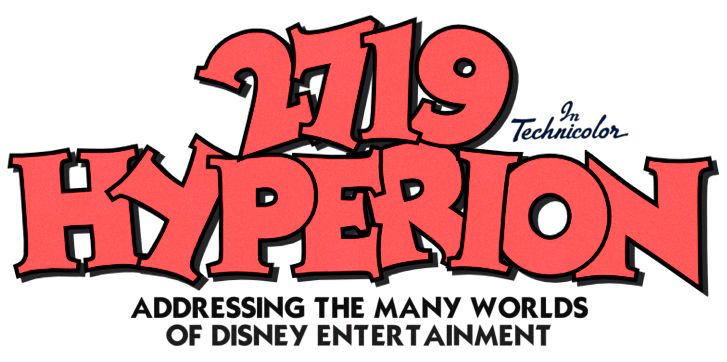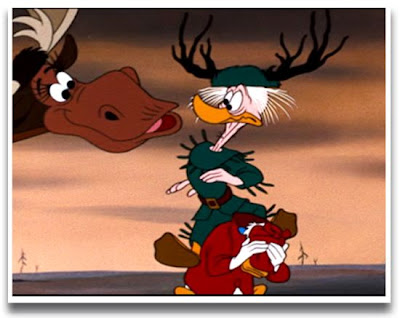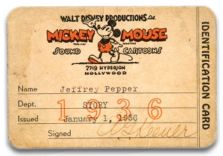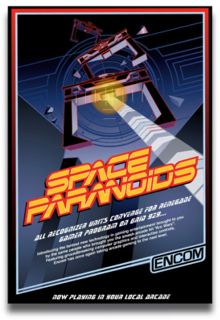If you've spent any amount of time at Walt Disney World, chances are pretty good that you've either seen or been one of these people: the crazed tourist, charging headlong through a crowd, fastpasses fluttering, stroller wheels locking up, shouting at their family in a mad headlong dash to "fun" at Splash Mountain, Space Mountain or wherever. Immediately upon arrival, the alpha male of the group will whip out the park map and begin madly planning the next "fun" of the day, oftentimes utterly missing the attraction he ran so far to get on. The Disney parks reward a leisurely pace and attention to detail, something many guests miss out on on their madcap dash through the parks. I used to chalk it up to personality types, but after many years of visiting those parks under various states of duress, I have another idea.
Between 1989 and 1999 - let's say, give or take, the bulk of the "Disney Decade" - Walt Disney World was expanded at a merciless rate. This short ten year time period saw the opening of two theme parks, something like fifteen hotels, two shopping districts, two water parks and two miniature golf complexes. By any standard that's a huge expansion, but when taken into account with the already existing two theme parks, one water park, zoological exhibit, shopping village and five-plus hotels, in ten short years Walt Disney World expanded from a big balloon to an overfilled zeppelin. She hasn't stopped yet.
Now, realistically for a moment, let's speak about clientele. Chances are very good that 50 - 60% of the people at Walt Disney World at any one time (except for that one crazy week in December, but that's besides the point here..) are utterly unlike you, the dear reader, who has made her or his way to this site - this sentence! - through your unwavering devotion to Disney. Many of Walt Disney World's annual visitors are people who come here sporadically, rarely, or perhaps just once in their whole lives. They are not devoted to Disney, and many of them have only the vaguest inclination of why the place has Walt Disney's name on it anyway, and some of them are still wondering why there aren't any roller coasters sitting out in asphalt parking lots like they have back at Six Flags over Texas. But most of them do know this: they've got about ten days to see it all because they're not planning on coming back for a long long time, if ever.
It's an expensive proposition, and when you factor in a potential desire to see the other Orlando attractions like Universal, Sea World, or even more minor excursions like the Orlando Premium Outlets, the time at Disney does begin to take on the air of a national emergency. Magic Kingdom was designed in 1971 to take two days to see, and it's only gotten bigger since. It's total insanity to try to realistically devote a single day to EPCOT, although if factors like operational hours and crowd levels were on your side it would be possible to get pretty satisfactory experiences at MGM Studios and Animal Kingdom in a single long day. That's still five "best case scenario" days, and that's only taking into account the physical parks themselves, without the hassles of transportation, hydration, eating and so on. It's a big pill to swallow.
One could argue that by stacking Walt Disney World with far too many things to possibly do in one trip, they are encouraging repeat trips, which is probably true. How many people honestly take advantage of any one of the four 18-hole miniature golf courses on property on any given day? How many trips have they already taken to Walt Disney World before the thought even occurred to them? On one hand this encourages the building of unique vacations, on the other it kind of excludes the once-in-a-lifetime tourist who will concentrate her efforts on seeing as many of the theme parks for as long as possible. Disney's practices of offering more than can possibly be done in the average length of the American vacation, and feeding the fires of the naturally resulting planning obsession with their 180-day booking window and FastPass itineraries is not only unfortunate, but in some ways actively irresponsible. Albeit, their only responsibility is making money, but where is the balance that you can pack into your vacation?
The original idea of Walt Disney World was just that: balance. The Magic Kingdom was the biggest draw and as such had the largest capacity, but even in the early days there were a variety of activities meant to encourage a vacation spent outside of that theme park. Golf was a heavy emphasis, and a whole resort catering to golfers coexisted with four golf courses around property. The Polynesian Luau and Top of the World were effectively onsite nightclubs, and a variety of rental craft plowed the waters of the Seven Seas Lagoon. There was the World Cruise, a narrated tour of the lagoon, and the Electrical Water Pageant, and even a ski show. In fact, once that Disney-made lagoon was the real heart of Walt Disney World. Now it's more like an epic inconvenience between your car and that theme park. The point that you weren't parking for the Magic Kingdom, but for the entire resort, has been lost in the shuffle. It's a subtle point but it is the difference between a more varied experience and that crazed run towards "fun".
EPCOT was finally added ten years later to only then extend the length of the tourist experience, but in the Eisner regime the expansion got totally out of control. Certain things did seem to be responding to tourist demands, such as budget hotels, although these were used mostly as an excuse to make the original hotels even more expensive. If EPCOT was the right expansion at the right time for fairly sound reasons, sometimes it seems like Eisner was building things just to placate his construction fetish. Walt Disney World is now home to something like 20,000 rooms, which admittedly is a fraction of the people that, say, Magic Kingdom can house at any one time, but that's a huge number nonetheless.
All of this is to ask the question: has Disney expanded themselves right out of any sort of reasonable proportion in Orlando? Although other countries have different standards of what an acceptable vacation is, American employers and - perhaps more importantly - American schools - demand increasingly that the family be present and available. Two weeks is about what the length of what a vacation is expected to be, and for many guests Walt Disney World is pretty close to too much. It's too much to take your time with, at least, and is sufficiently overwhelming to cause as much stress and anxiety as the job it is supposedly relieving. In some ways it can be said that the "Vacation Kingdom" has become the true taskmaster's paradise, the workaholic's week off where the differences become negligible.
The funny thing with this sort of complaint is that it's simply not addressable in any way. Once Disney builds something, they should go right on keeping it up. There are both good and bad things about the expansion after all. Perhaps the absolute realistically worst thing about it is that it has necessitated the spreading thin of Disney's resources; their ability to maintain any one park well is directly related to how many other parks need a slice of the profits. But there are good things too. Eisner's personal kink for hotels resulted in the Grand Floridian, Wilderness Lodge and the Boardwalk, three Disney properties which are so great they they stop being above average hotels and become actually good for the soul. I'm not sure I would trade a 1978 Walt Disney World for a 2008 Walt Disney World, but I know I would miss those properties. Perhaps it's a generational thing. The difference between the two eras is like having a single drink at a friend's house and binge drinking in Times Square.
 The Los Angeles Times has reported that Disney Legend Bob Broughton passed away on January 19. He was 91 years old.
The Los Angeles Times has reported that Disney Legend Bob Broughton passed away on January 19. He was 91 years old.














































